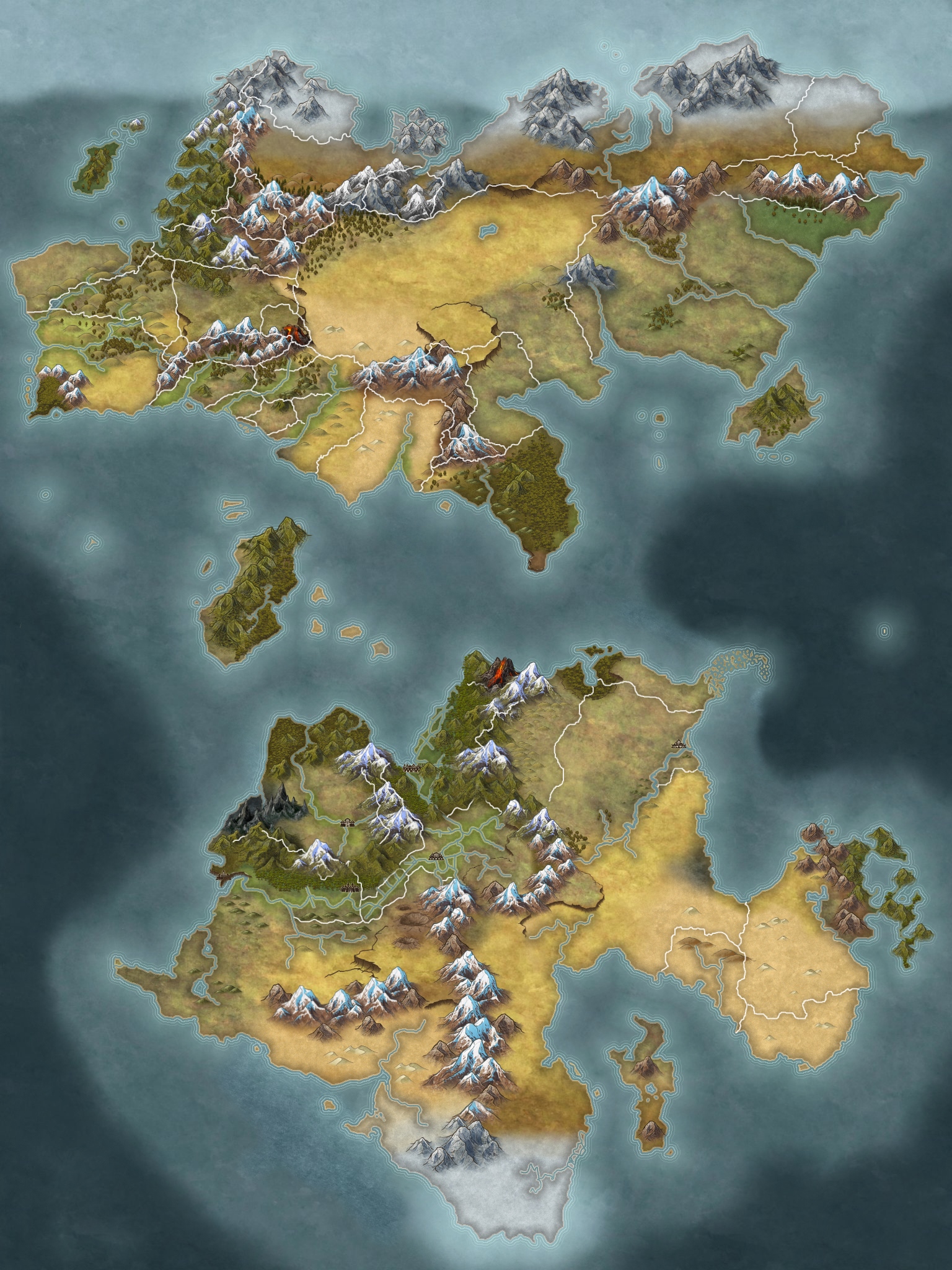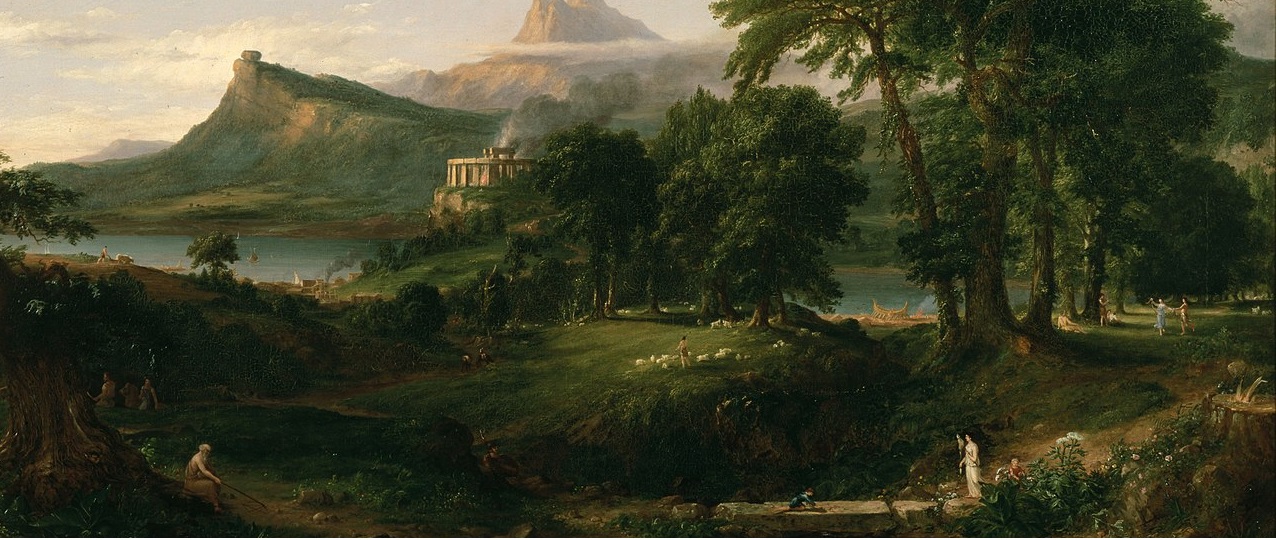The Ilosi Republic (/ɪlosi ripəblɪk/ (Aeillan: /di:mokratia ton ɪlos/))
Δημοκρατία τον Ίλος
The Ilosi Republic was an early and increasingly powerful state in the Aeillan region. The only institution of the Republic that was constant was the Senate which, though changed and reformed throughout the Republican period, remained the preeminent power of the Republic. The Republic would become increasingly centralized throughout its time and expansion, starting as a weak decentralized confederacy it would eventually evolve into a large, and powerful, unified central state, one of the first human societies in southern Galisea that would achieve this much.
The Ilosi Republic was an advanced state, though not nearly to the same extent as its successor with cultural strife posing a significant problem throughout the Republic's existence and requiring constant efforts to suppress minority cultures, or unify them under a single banner. These efforts, though initially unsuccessful would eventually foster the development of Aeillan culture. So too would engineering and scientific feats steadily become greater throughout the Republic's history.
The Republic would dissolve in the face of a pirate crisis and the resulting war, which would weaken the economy, republican institutions and see the growing influence of M. Argentius Aquilarius a prominent Senator and General. After the war, Aquilarius would overthrow the Republic and establish himself as the ruler of a new state. The Aeillan Empire was born, and the Republic undone.
Culture
Early in the Republic's existence there wasn't really a truly unified culture, though the initial Ilosi city-states shared a language there was little else that was similar. Throughout the history of the nation, the Ilosi culture would become increasingly united, establishing a few cultural values that would become common to all Ilosi peoples. The Law of Aeillos and the establishment of the a unified Tyroi-Ilosi tongue, and the spread of the Pandroi religion would cement the first aspects of what would eventually become the Aeillan culture.
History
the history of the Ilosi Republic can be split into the early republican period and the late republican period.
Early Republic
In its early days the Ilosi Republic struggled to maintain itself, beset by hostile city-states, and tribal raiders on all sides. The relatively weak central government made responding to crises ponderous, and indeed many of the constituent poleis considered breaking apart the Republic on account of not being capable of providing aid quickly enough to justify its existence. This early defeatist mentality was undone during the Subi War against an alliance of Ilosi city-states under the leadership of the Polis of Subia. The Subi Confederacy's handy defeat at the Battle of the Crossing of Helosos, was capitalized one by Senator Pr. Marcus Galla, leading the army at the battle who used his dramatic victory as a sign of divine favor. Galla along with a trio of other Senator-Generals would go on to crush the remaining armies of the Subi Confederacy, and sack and burn the city of Subia. After the conclusion of the Subi War, the increased unitarial zeal, and influence of those members of the Senate who did go to war resulted in a change to the governing rules of the Senate that would reinforce the power of the central government. Although military reforms would not come until later, this new more unified government began to steadily expand the Republic, incorporating some Poleis by diplomacy, and much additional territory by force of arms. The establishment of near total hegemony over the Ilos and the steady expansion into the Menaulatolia and Inner Huria saw the republic begin to stabilize. The establishment of a singular Proconsul who would serve as the head of the Ilosi State saw the final demise of the early Republic, and the formation of it in its later form.Late Republic
During the Late Republican period the Republic began a second phase of expansion, taking over many of the Poleis of coastal Menaulatolia, as well as finally pushing into the Transoria. This increased territory brought more economic prosperity to the peoples of the Republic but greatly increased cultural friction as much more populous states with dissimilar cultures were incorporated into the fold. The friction caused by the growing Tyroi minority resulted in a greater push for cultural unity, a number of attempts were made to encourage assimilation, but eventually a movement within the Senate was started to foster the creation of a unified culture. This perhaps was most exemplified by the Law of Aeillos, which reorganized the language system of the Republic into a unified tongue, birthing Aeillan culture. As the republican period continued, the Ilosi region would be swept by a major religious change. The Pandroi religion, hailing from the Spartharii River valley would spread quickly throughout the Ilosi Republic in the later republican period. Although Pandroi would never become the official religion of the republic, by the end of its existence, the faith would become by far the most commonly practiced religion of Ilosi citizens. In the last century of the Republic, the Tyros River Valley would fall polis by polis into the hands of the nation, and be incorporated into the Republic. Towards the end of the Late Republic Period, the nation would be wracked by a crisis of pirates hailing from the Hadar, which would become the seminal problem of the republic and would lead to its downfall.Disbandment
The Ilosi Republic was undone when, after a steady escalation of piracy on the coast of of the Yulan Ocean, the republican economy nearly collapsed after a piratical confederacy under the "Pirate King" Walid abu Nazim destroyed the Republican fleet, and captured and ransomed many influential senators for a massive sum of money. The ensuing Hadar Pirate War would last several years, and see the complete destruction of the pirates. However, much blood and treasure had been expended in pursuit of victory, and influence had firmly fallen into the hands of M. Argentius Aquilarius. Seeing a weak republic, the influential General and Senator staged a coup against the Senate, and established himself permanently as Emperor and first citizen of a new Aeillan Empire.
Demography and Population
The exact population of the Ilosi Republic has been relatively hard to properly account, with many of the old records destroyed in various conflicts and riots, only scattered texts remain. At its height, right before the transformation of the Republic into the Aeillan Empire, the Ilosi Republic maintained a population of roughly 12,110,000 persons. The majority of the nation's population was human though as the nation expanded past its original territories and into lands not traditionally occupied by humans increasing numbers of orcs, half-orcs, gnomes, as well as more exotic species were incorporated into the territory as enslaved peoples at first, but with a gradually growing free population.
Despite the numerous conflicts that took place during the era of the Ilosi Republic, the time was regarded as a period of relative peace and prosperity and it is believed that the population of the Republic was steadily growing throughout most its history, with only a handful of periods likely to have caused any noticeable population decline. The largest known decline occurred as a result of the famines and disease as a result of the the particularly devastating war of conquest against the Polis of Polanis which was a particularly powerful state at this time.
Territories
The Republic steadily expanded throughout its existence. from a small confederacy of poleis along the northern Ilos, before coming to encompass most of what would become the Aeillan world. It reached its territorial peak shortly before the establishment of the Empire, where it encompassed some 950,000 kilometers of territory stretching from the eastern banks of the Tyros to the lands on the western edge of the Ilos Valley. The Republic additionally created a fair number of buffer regions, particularly in Huria in order to prevent "barbarians" from penetrating deeply into Aeilla and raiding the heartlands. Though the Republic would attempt to secure the western reaches and Spartharii Vale, it wasn't until the Imperial Period that this realm would be properly secured.
Military
The Ilosi Republic initially lacked a standing professional army, relying on citizen-soldier armies of the various Poleis that comprised the state. In the early Republic, Senators would possess the ability to raise armies to go on campaign by offering a substantial sum of money to pay for the wages of soldiers and presenting a campaign plan to the Senate. They could then, with Senatorial approval call up levies and mercenaries from the constituent states. These early armies would suffer from logistical shortcomings, with often poor leadership and direction and an inability to fight for longer than a few months during the winter. Later in the life of the Ilosi state, campaigns would be put under the direction of a military tribuneral, who directed campaigns and appointed competent notables to lead armies. Eventually a formalized professional army would be formed, and steadily grew in importance and political influence throughout the last years of the Republic.
Throughout the life of the Republic, its armies generally favored archery and skirmishing with a disproportionate amount, often even a majority of those forces composed of various javelineers, slingers and archers. In the early republican period, the private citizen-soldiers called up were often kitted out with whatever they owned which resulted in a strong class divide in equipment with the bulk of the army having simple weapons and little to no armor, and a few cadres of mercenaries and wealthy people with the best equipment money could buy. When the army was professionalized, a semistandardized kit was established with most soldiers being equipped with either a bow, a spear shield and javelins, or as cavalry with a spear sword and shield, with light mail armor and a helmet being the norm.
Technological Level
The Ilosi Republic was a relatively advanced state for most of its existence, possessing technologies that were rare for most other lands ruled by humans. However, their achievements and technologies were very much the inferiors of those of Cyrenica and Volgeberg which both were at the zenith of their power, as well as being behind the Feloran states. Thanks to the incorporation of various dwarven peoples as advisors and inventors later in the Republican period, a number of foreign technologies were incorporated into the Republic and the gap between it and its more advanced neighbors closed significantly.
Religion
The Ilosi Republic never formally established an official state religion, with many of the Ilosi poleis, and especially constituent territories further afield possessing their own unique religions. Most peoples within the Republic maintained relatively similar sets of gods however, and the various patchwork religions were mostly compatible, with a generally cosmopolitan outlook favoring religious harmony over conflict keeping potential trouble relatively minimal. During the middle republic and late republic periods, the spread of Pandroi saw much of the region fall under the sway of that faith and a great many temples were established to those gods, the Pandroi faith was never however formalized until the establishment of the Aeillan Empire.
Foreign Relations
The Ilosi Republic had alternatively neutral or hostile relations with most of its neighbors, its policy of expansion saw it alienating most of the unaligned Aeillan Poleis, and especially those who were not Ilosi. The Republic also had frequent hostilities with the various Huri and Aaurmite tribes and conflict with those two peoples were a constant problem throughout the history of the Republic. The Republic did tend to have relatively friendly relations with the Kingdom of Cyrenica and the Kingdom of Nimeara, though relations with the latter started to sour later in the history as the two nations encountered a conflict of interest near the Spartharii River Valley. Relations with people further afield were irregular at best, and few, if any records exist leaving much in doubt.
Trade & Transport
The Ilosi Republic was a highly riverine civilization with almost all commerce conducted via traversing the Ilos River and its tributaries, especially in the early years of the Republic. As a result, flat bottomed watercraft were extremely well developed for their time. This central river also served as the primary artery of commerce for most of the Ilosi Republic's life. As the nation expanded, especially into the more hilly and less accessible regions in the Menaulatoia and Inner Huria, it adapted, slowly at first, but with increasing ability towards the end of its existence toward overland travel, and an extensive road network would be developed that would become the basis for the far better engineered road system of the Aeillan Empire.
Infrastructure
The Ilosi Republic maintained a highly advanced network of transit canals and locks for most of its history, largely as a result of the necessity of using the Ilos River as the primary transportation and commercial route for much of its history. Towards the end of the Republic's life, largely to satisfy the needs of inland cities, road networks and aqueducts became increasingly common, and increasingly complex. Other technical achievements were exceptionally rare, and limited largely to Apepsos, or other major Ilosi cities.
DISBANDED/DISSOLVED

288 EF - 456 EF
Type
Geopolitical, Republic
Capital
Successor Organization
Government System
Electocracy
Power Structure
Federation
Economic System
Market economy
Currency
Ilsoi Talent
Location
Official Languages
Related Ranks & Titles
Related Professions
Related Ethnicities









